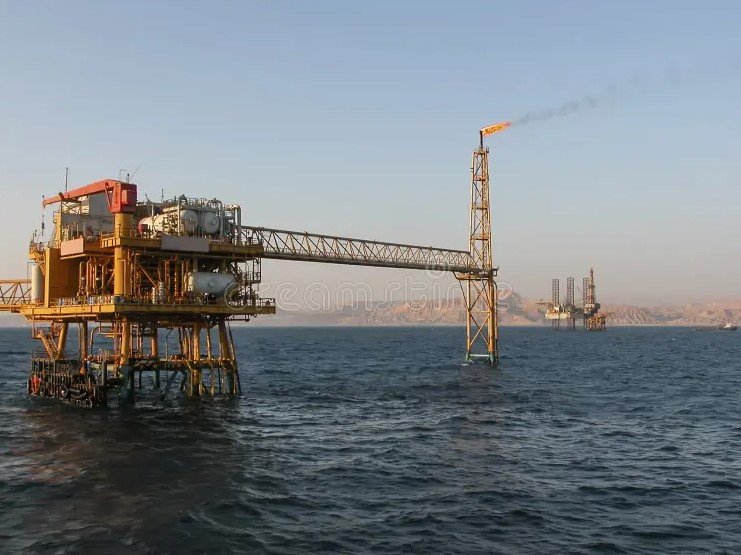Agiba Petroleum’s Arcadia-28 starts production after targeted acid stimulation, supporting Egypt’s strategy to ramp up domestic output
Egypt’s oil sector has just scored a small but significant win. The Ministry of Petroleum announced on Monday that production has begun at a new well—Arcadia-28—adding 4,100 barrels of oil equivalent per day (boe/d) to the country’s total output.
While the number might not shake global markets, it’s part of a broader push by Cairo to tap every available drop within its borders as energy demand and economic pressures rise. For a country still juggling fuel import bills and seeking energy self-sufficiency, even incremental production matters.
Arcadia-28 Goes Live After Specialized Stimulation
The Arcadia-28 well is located in the Western Desert and operated by Agiba Petroleum Company, a joint venture between Egypt’s General Petroleum Corporation and Italy’s Eni. What sets this well apart is how it was brought online.
According to the Ministry’s statement, Arcadia-28 started production on July 19 following a “precise acid stimulation operation.” The method involves injecting acid into the rock formation to enhance permeability and oil flow—especially useful in tight carbonate formations like the Masajid Carbonate, which this well targets.
Officials noted the technique was similar to one successfully applied in Agiba’s Iris well last year. That previous success encouraged a repeat in Arcadia-28, and so far, the results appear promising.
Just one sentence here: The well is now flowing steadily at around 4,100 barrels a day.

Agiba’s Quiet Expansion Strategy Pays Off
Agiba might not be a household name outside energy circles, but it’s become one of Egypt’s more dynamic petroleum players, quietly growing its footprint in concession zones far from public view.
The Ministry framed the Arcadia-28 milestone as part of Agiba’s larger expansion blueprint, which has been in motion across its Western Desert blocks for over a year. Unlike the attention-grabbing offshore gas platforms in the Mediterranean, these onshore oil fields tend to expand quietly—but no less effectively.
Here’s what the company’s recent output looks like, including the latest addition:
| Well Name | Location | Formation Target | Current Output (boe/d) |
|---|---|---|---|
| Arcadia-27 | Western Desert | Masajid Carbonate | ~3,800 |
| Iris | Western Desert | Upper Bahariya | ~4,000 |
| Arcadia-28 | Western Desert | Masajid Carbonate | ~4,100 |
It’s not just about hitting new targets—it’s about consistency, and that’s something Agiba has been building slowly over time.
Energy Policy Focused on Production—Not Just Discovery
For Egypt, this isn’t just a technical success—it’s a policy win.
Petroleum Minister Tarek El-Molla has repeatedly emphasized the need to squeeze more out of existing reserves, rather than relying purely on splashy new discoveries. This means optimizing legacy wells, enhancing production through modern techniques, and fast-tracking small-scale developments like Arcadia-28.
The ministry’s broader strategy revolves around four pillars—one of which is maximizing current production capacity. Arcadia-28 fits squarely within that mission.
Another quick point? The project was completed in under two months, which is unusually fast for onshore development.
Why This Matters for Egypt’s Energy Math
Egypt’s energy landscape has shifted dramatically in the last decade. The country moved from being a net gas importer to becoming a regional exporter, thanks largely to the giant Zohr gas field in the Mediterranean. But when it comes to oil, the situation’s more delicate.
Domestic oil consumption continues to rise, especially as industrial demand recovers and transportation volumes grow. Though Egypt produces roughly 560,000 barrels per day, it still imports significant volumes of crude and refined products.
That’s why every marginal increase—like Arcadia-28’s 4,100 boe/d—helps chip away at the deficit. It also signals to foreign partners that Egypt is serious about operational efficiency.
One energy analyst in Cairo said, “Arcadia-28 won’t change the game overnight, but it proves Egypt can still make quick wins if the right techniques are applied. That’s a confidence booster for investors.”
What’s Next on the Drilling Calendar?
More wells like Arcadia-28 are likely in the pipeline.
Agiba is already conducting feasibility studies on nearby formations, particularly around Masajid and Bahariya. Ministry officials hinted that at least two more wells could be drilled in the same concession by Q4 2025 if current conditions hold.
There’s also buzz around potential enhanced oil recovery (EOR) projects in the same area, though no formal announcements have been made.
Meanwhile, Egypt’s state energy apparatus continues to lean into partnerships with Eni, Apache, BP, and other international players who bring in both capital and technical know-how.
